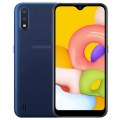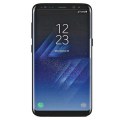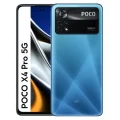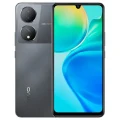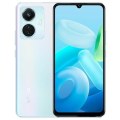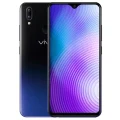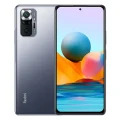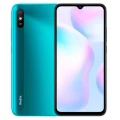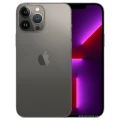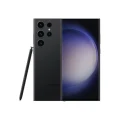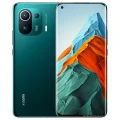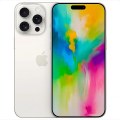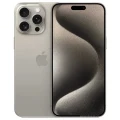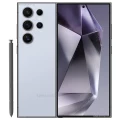- Awesome page
- Latest Mobile
- Smartphones
- Samsung Galaxy A12
Samsung Galaxy A12
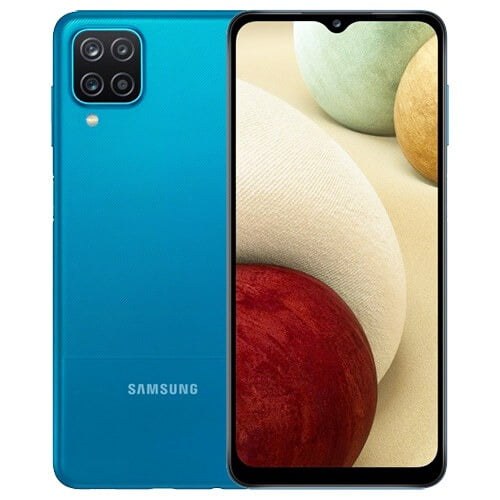

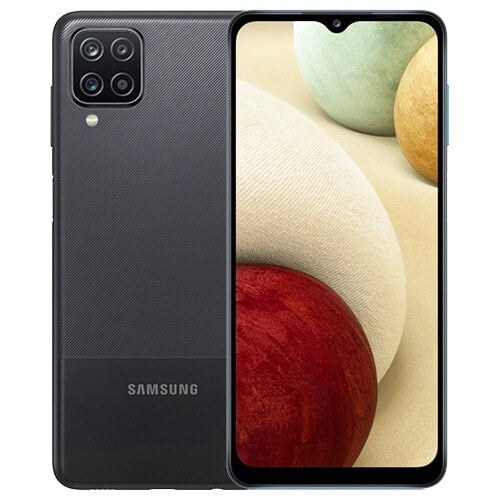

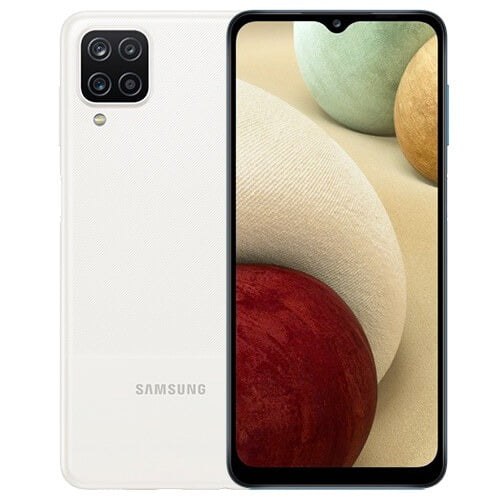
Samsung Galaxy A12 Price in Bangladesh
The starting price of the 4/64GB Samsung Galaxy A12 in Bangladesh is BDT 14,999. With its quad-camera configuration, 5000mAh battery, and 6.5-inch PLS IPS display, this affordable smartphone offers excellent value for the money.
Specifications
General
| Model | Samsung Galaxy A12 |
| Announced | 24-11-2020 |
| Released | 21-12-2020 |
| Status | Available |
| Official price | Official (4GB+64GB) ৳14,999 / (4GB+128GB) ৳15,999 |
Design
| Dimensions | 164 x 75.8 x 8.9 mm (6.46 x 2.98 x 0.35 in) |
| Weight | 205 g (7.23 oz) |
| Colors |
Black, White, Blue, Red |
Network
| Technology | GSM / CDMA / HSPA / LTE |
| 2G Network |
GSM / CDMA / HSPA / LTE |
| 3G Network |
HSDPA 850 / 900 / 1900 / 2100 |
| 4G Network |
LTE |
| GPRS <strong>GPRS</strong> (General Packet Radio Service) is a packet oriented mobile data service on the 2G and 3G cellular communication system's global system for mobile communications (GSM), Generally, GPRS is used for the purpose of wireless data transfer, such as sharing pictures and videos or browsing the Internet via a mobile phone connection. | |
| EDGE <strong>EDGE</strong> (Enhanced Data GSM Environment) is a wireless network technology generally considered the next step in the 2G network offers data transfer rates up to four times faster than ordinary GSM networks, Generally, EDGE is used for the purpose of wireless data transfer, such as sharing pictures and videos or browsing the Internet via a mobile phone connection. | |
| Speed | HSPA 42.2/5.76 Mbps, LTE Cat4 150/50 Mbps |
Display
| Display Type <strong>Display Technology => </strong> A number of display technologies and types used in mobile phones => TFT (Thin Film Transistor), IPS (In-Place Switching), OLED (Organic Light Emitting Diode), AMOLED (Active-Matrix Organic Light-Emitting Diode), Super AMOLED (an even advanced version of AMOLED), Resistive Touchscreen (Resistive touchscreens contain two layer of conductive material with a very small gap between them which acts as a resistance), Capacitive Touchsceen (Capacitive touchscreen technology consists of a layer of glass coated with a transparent conductor) | TFT capacitive touchscreen, 16M colors |
| Size | 6.5 inches, 103.7 cm2 (~83.4% screen-to-body ratio) |
| Resolution | 720 x 1560 pixels, 19.5:9 ratio (~264 ppi density) |
Camera
Main camera
| Camera Setup | Quad Camera |
| Primary <strong>Camera</strong> is able to capture photographs and usually videos, The most important characteristics of a camera are the resolution (measured in megapixels), lens focus type (fixed or automatic), higher megapixel cameras are known to capture higher quality photos, but not always a good measurement of the photos quality. |
48 MP, f/2.0, (wide), AF 5 MP, f/2.2, 115˚ (ultrawide) 2 MP, f/2.4, (macro) 2 MP, f/2.4, (depth) |
| Features |
LED flash, panorama, HDR |
| Video | 1080p@30fps |
Selfie camera
| Camera Setup | Single |
| Primary <strong>Camera</strong> is able to capture photographs and usually videos, The most important characteristics of a camera are the resolution (measured in megapixels), lens focus type (fixed or automatic), higher megapixel cameras are known to capture higher quality photos, but not always a good measurement of the photos quality. |
8 MP |
| Features |
f/2.2 |
| Video | 1080p@30fps |
Hardware
| Chipset <strong>Chipset</strong> is a group of integrated circuits designed to perform one or a more dedicated functions, often with real time computing constraints, Popular smartphones are equipped with more advanced embedded chipsets that can do many different tasks depending on their programming. | Mediatek MT6765 Helio P35 (12nm) |
| CPU <strong>CPU</strong> (Central Processing Unit) mostly known as processors, CPU processes instructions in order to carry out certain functions that make your device operate properly. Processors are often described as the brain of computers, smartphones and tablets, Smartphones and tablets rely on processors to carry out their every task, Processors are an incredibly important factor in selecting any type of computing device, including your smartphone. | Octa-core (4x2.35 GHz Cortex-A53 & 4x1.8 GHz Cortex-A53) |
| GPU <strong>GPU</strong> (Graphics Processing Unit) is a single-chip processor designed to rapidly manipulate and alter memory to accelerate the creation of images in a frame buffer intended for output to a display, This includes things such as lighting effects, object transformations, and 3D motion. | PowerVR GE8320 |
| RAM (Memory) <strong>RAM</strong> (Random Access Memory) is a type of computer memory that can be accessed randomly, any byte of memory can be accessed without touching the preceding bytes that allows information to be stored and accessed quickly from random locations. RAM is the most common type of memory found in computer systems, smartphones, tablets and other electronic devices. | 2/3/4/6 GB |
| Internal Storage <strong>Internal Storage</strong> is a data storage space (flash memory) mostly used in smartphones, tablets and other electronic devices where operating system, apps, music, photos, videos, files and other user data Is stored. | 32/64/128 GB |
| Sensors <strong>Sensors</strong> are electronic components that detects and responds to some type of input from the physical environment. The specific input could be light, heat, motion, moisture, pressure and location, The output is generally a signal that is converted to use in computing systems, a location sensor, such as a GPS receiver is able to detect current location of your electronic device. |
Fingerprint (side-mounted), accelerometer |
Connectivity
| Bluetooth <strong>Bluetooth</strong> is a wireless communications technology for exchanging data between mobile phones, headsets, computers and other network devices over short distances without wires, Bluetooth technology was primarily designed to support simple wireless networking of personal consumer devices. | 5.0, A2DP, LE |
| Infrared <strong>Infrared</strong> connectivity is an old wireless technology used to connect two electronic devices. It uses a beam of infrared light to transmit information and so requires direct line of sight and operates only at close range. | |
| USB | 2.0, Type-C 1.0 reversible connector, USB On-The-Go |
| GPS <strong>GPS</strong> The Global Positioning System is a satellite-based radio navigation system, GPS permits users to determine their position, velocity and the time 24 hours a day, in all weather, anywhere in the world, In order to locate your position, your device or GPS receiver must have a clear view of the sky. | Yes, with A-GPS, GLONASS, GALILEO, BDS |
| NFC <strong>NFC</strong> (Near field communication) is a set of standards for smartphones and similar devices to establish peer-to-peer radio communications with each other by touching them together or bringing them into proximity, usually no more than a few inches. |
Battery
| Battery Type <strong>Battery Type => </strong> Cell phones run on various kinds of batteries depending on the manufacturer, phone size or shape and features. There are basically four types of cell phone batteries => Lithium Polymer, Lithium Ion, Nickel Metal Hydride and Nickel Cadmium. | Non-Removable Li-Po |
| Capacity <strong>Battery Capacity</strong> is a measure (typically in Amp-hr) of the charge stored by the battery, and is determined by the mass of active material contained in the battery. The battery capacity represents the maximum amount of energy that can be extracted from the battery under certain conditions. | 5000 mAh |
| Charging Charging | Fast charging 15W |
Exploring the Samsung Galaxy A12 Unveiling Its Pros and Cons for Smartphone Savvy Buyers
In the bustling world of smartphones, standing out is no easy feat. Yet, Samsung’s Galaxy A12 aims to do just that. For tech enthusiasts, Samsung fans, and anyone in the market for a new smartphone, the A12 presents itself as a compelling option. But what makes it tick? This blog explores every nook and cranny of the Galaxy A12, ensuring you have all the insights needed to gauge if it fits your lifestyle.
Design and Build Quality
The Samsung Galaxy A12 sports a design that marries simplicity with functionality. At first glance, its sleek appearance can captivate any smartphone user. The device features a modern, matte finish that not only enhances its aesthetic appeal but also minimizes fingerprint smudges—a small but significant design choice.
In terms of materials, the Galaxy A12 is built mainly from plastic, a choice that might not scream luxury but does ensure durability. This makes it a great companion for those who prioritize practicality over flashiness. Its sturdy build means it can withstand the occasional drop or bump, making it ideal for everyday use.
Additionally, the ergonomic design is worth mentioning. The phone feels comfortable in hand, with buttons placed conveniently for easy access. Samsung has managed to create an affordable device that doesn’t compromise on usability, ensuring that even budget-conscious shoppers can enjoy a premium feel.
Display and Multimedia Experience
When it comes to the display, the Samsung Galaxy A12 features a 6.5-inch PLS IPS screen, which is ample for most users. Its resolution of 720 x 1600 pixels ensures a decent viewing experience, though it might not match the vibrancy seen in higher-end models. Still, it’s perfectly suitable for casual browsing and media consumption.
Picture quality is where the A12 holds its own. Colors are relatively accurate, and the brightness level is sufficient for indoor use. Watching videos or scrolling through photos is a pleasant experience, though those who love high-definition displays might notice the difference.
For audiophiles, the multimedia experience extends beyond just visuals. The A12 provides good sound quality for its price range. While it may not have stereo speakers, the audio output is clear enough for calls, music, and videos. Overall, it offers a balanced multimedia experience that caters well to general users.
Performance and Battery Life
Performance-wise, the Samsung Galaxy A12 is equipped with the MediaTek Helio P35 chipset, coupled with 4GB of RAM. For everyday tasks such as texting, browsing, and social media, the phone performs adequately. It’s not blazing fast, but it handles multitasking without much lag.
For mobile gamers or heavy users, the performance might feel a bit constrained. Games run smoothly at low to medium settings, but pushing the device too hard can lead to hiccups. This is something to consider if high performance is a priority for you.
Battery life is a strong suit for the A12, featuring a 5000mAh battery that easily lasts a full day under normal use. Whether you’re streaming videos, playing games, or simply browsing, the battery’s longevity is reassuring. Fast charging support means you won’t be tethered to an outlet for long, further enhancing its convenience.
Camera Capabilities
Samsung’s Galaxy A12 comes equipped with a quad-camera setup on the rear, led by a 48MP main sensor. This promises quite a bit in terms of photographic potential, especially for a device in this price category. In good lighting conditions, the camera captures detailed images with vibrant colors.
Low-light performance, as expected, tells a slightly different story. While it manages to capture usable photos, the quality drops noticeably in dim environments. However, the night mode feature helps brighten up shots, making it a handy addition for photography enthusiasts.
The front camera offers 8MP, which is more than sufficient for selfies and video calls. Video recording capabilities are decent, providing smooth footage at 1080p. Overall, the A12’s camera suite provides versatility, catering to most day-to-day photographic needs.
Software and User Interface
Running on Samsung One UI, based on Android 10, the Galaxy A12 offers a user-friendly interface that is both intuitive and customizable. One UI is known for its clean design and ease of use, and the A12 continues this tradition with aplomb.
Customization options allow users to tailor their home screen and settings to personal preferences. Features such as dark mode and digital wellbeing tools enhance usability, making the user experience more enjoyable and efficient.
Updates are a crucial aspect of any smartphone’s lifecycle, and Samsung provides regular updates to ensure security and performance improvements. For users who value a smooth and consistent software experience, One UI remains a strong contender.
Value for Money and Comparison
Priced competitively, the Samsung Galaxy A12 offers a blend of features that make it an attractive option for budget-conscious consumers. It provides a solid smartphone experience without breaking the bank, appealing to both first-time smartphone buyers and those seeking a reliable secondary device.
When compared with other smartphones in its price range, the A12 holds its ground. Competitors like the Xiaomi Redmi 9 and Realme C15 offer similar features, but Samsung’s brand reliability and software experience often tilt the scales in its favor.
The A12’s pricing strategy positions it as an accessible option for many, without compromising essential features. It effectively balances performance, design, and usability, making it a worthy consideration for anyone looking to maximize their investment.
Conclusion
In summary, the Samsung Galaxy A12 stands out as a well-rounded smartphone that offers remarkable value for money. While it may not rival flagship models in terms of cutting-edge features, it excels where it counts—providing a reliable and satisfying user experience.
Its strengths lie in its robust battery life, dependable camera capabilities, and user-friendly interface. These elements make it an attractive proposition for tech enthusiasts, smartphone shoppers, and Samsung fans alike.
If you’re considering a new smartphone that melds practicality with performance, the Galaxy A12 deserves a spot on your shortlist. For those ready to make a decision, explore further and discover how the A12 can fit seamlessly into your digital life. Whether upgrading or joining the Samsung family for the first time, the Galaxy A12 is a choice that promises to deliver.
